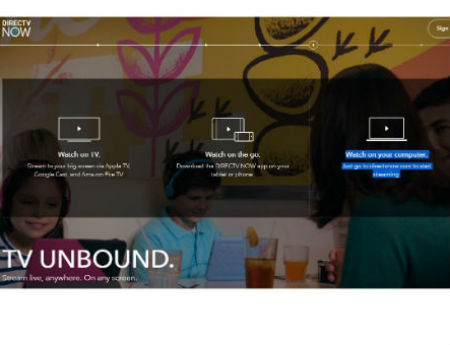Moffett: DirecTV ‘Playing a Dangerous Game’ With OTT-TV Service

AT&T has set a baseline price of $35 per month for a 100-plus channel OTT-TV service, DirecTV Now, industry analysts are already starting to poke holes in the service’s initial business case.
RELATED: DirecTV Now to Cost $35 Per Month
DirecTV Now hasn’t released the channel lineup for the new service, but a “good estimate” of the monthly programming expense for it is “around $34,” Craig Moffett, analyst at MoffettNathanson, wrote in a research note issued Wednesday.
“That would leave DirecTV’s gross margin per subscriber at around $1. Yes, $1. DirecTV’s margin after SAC [subscriber acquisition cost], customer service, transport, computing and storage costs would be negative,” Moffett explained, noting that DirecTV Now’s initial foray, based on available estimates, is akin to the “Entertainment” package for regular DirecTV, which includes ESPN.
He noted that those estimates also assume a price per channel that is on par with the regular DirecTV service, but wondered if the company is paying a premium for the digital rights.
“On the pure video product, DirecTV Now appears willing to make little-to-no money or even lose money,” BTIG analyst Richard Greenfield surmised in a blog post (free registration required) on this same general topic issued on Friday (October 28).
Moffett said it’s his understanding that DirecTV Now has deals in place with all major content owners with the exception of CBS, with “some contention” on whether Fox and AT&T have reached a deal.
Multichannel Newsletter
The smarter way to stay on top of the multichannel video marketplace. Sign up below.
“Excluding CBS and Fox, content costs according to [SNL] Kagan would be in the $26 range, again assuming that there are no premiums associated with the additional rights afforded the new delivery platform.”
Meanwhile, he estimates that DirecTV subscribers typically command a $60 video gross margin, so the company will need to be careful not to nip at its traditional pay TV product.
“AT&T’s aim is, of course, to minimize cannibalization of existing subscribers (and minimize piracy and password sharing), so the new service will be limited to a single stream, reducing its attractiveness as a substitute for linear packages that serve whole household,” Moffett explained.
Greenfield noted that he expected, prior to Stephenson’s announcement this week, that the DirecTV Now service would cost at least $60 per month.
With that in mind, he expects $35 per month to be the “base offering” for DirecTV Now, with multiple tiers coming that provide a more extensive channel line-up and access to other features, such as a cloud DVR, among the possibilities.
Using Sling TV as a “very rough proxy” with OTT subscriber acquisition costs and costs tied to transport, storage and computing, Moffett said an OTT-TV service would need to be priced at about $45 above content costs to achieve true economic indifference between DirecTV’s regular satellite TV service and an OTT subscriber at the unit level.
“That is, DirecTV would have to price their DirecTV Now product at around $80,” Moffett wrote, noting later that the OTT-TV service would limit cannibalization in part because it is not a realistic substitute for the full traditional DirecTV service.
Back to Greenfield, the analyst said he was “highly skeptical” that a $60-plus/month DirecTV Now service with spotty live local TV coverage, no CBS and no cloud DVR would have much of an impact on the pay TV industry. But the newly revealed price point changes that outlook a bit.
“At only $35 per month, with a relatively full suite of cable networks (albeit still spotty broadcast TV coverage and no RSNs in the base offering), we expect far greater consumer interest in DirecTV Now,” Greenfield said. “Not only will DirecTV Now cannibalize a portion of existing DirecTV satellite-based subscribers, it will take video subscribers away from DirecTV’s competitors.”
Moffett, meanwhile, thinks that AT&T’s approach poses a possible danger to its pay TV business.
“Like running with scissors, it probably won’t be life threatening – the number of subscribers they will cannibalize won’t be large enough to inflict a mortal wound to their own business, and the single stream limitation and inherent drawbacks of an OTT service will similarly limit the damage to the Pay TV ecosystem overall. Still, we believe DirecTV is playing a dangerous game.”
Though Comcast has repeatedly said that the economics of an OTT-TV service don’t add up, Greenfield still believes that a virtual MVPD offering from Hulu expected early next year, plus DirecTV Now’s super-aggressive pricing, will force Comcast’s hand to offer a national pay TV service.
RELATED: Roberts: ‘OTT Economics Are Unproven To Us’
“We believe Comcast has been resisting launching nationwide as it does not believe the coming wave of vMVPDs will have a material impact on the multichannel video landscape,” Greenfield wrote. “However, with DirecTV Now priced at just $35, we find it hard to believe the product will not have a meaningful detrimental impact of Comcast and other MVPDs.”
